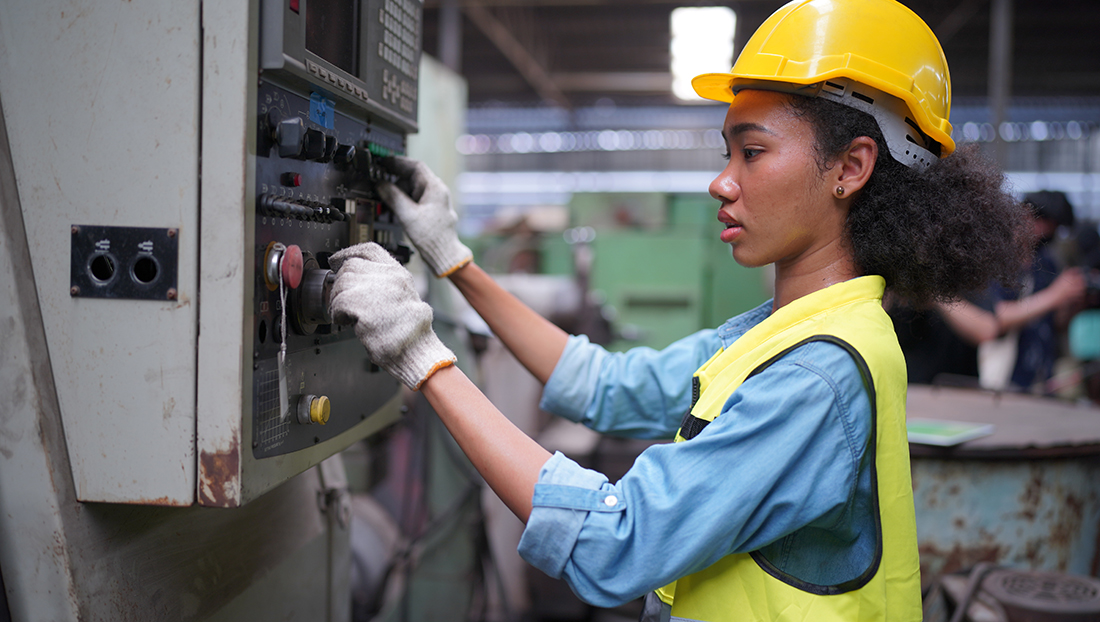Celebrating best practice as part of National Apprenticeship Week, BAE Systems explains how its award-winning apprenticeship programme is boosting diversity and inclusion.
BAE Systems is a technology-led defence and aerospace business with over 35,000 employees in the UK. We have many specialist STEM skills, such as nuclear engineering and systems engineering, which are challenging to recruit in the marketplace.
Apprenticeships are absolutely vital to meet our future skills needs, whilst also providing a pipeline of diverse talent. Last year we won ISE’s award for best apprenticeship.
The great majority of our apprentices are direct from school and college and 90% are aged 16-24.
Not only does our business need to recruit in areas in STEM with specialist skills, we also need to expand the pipeline more broadly to address our diversity challenges as a sector. In England, around 10% of engineering apprentices are women and that drops to 3% in Scotland.
We aim for our outreach and apprenticeship programmes on offer to be ‘future proofed’ and responsive to wider changes in society. That way we can be adaptive to the digital revolution, new sustainability priorities and working effectively and safely in a Covid environment.
What we delivered
BAE Systems delivers apprenticeships to over 2500 people across the UK, making us one of the largest apprenticeship providers in the country. We have grown from having 10 apprenticeship programmes to more than 50 at Levels 2 to 7.
This is underpinned by a strong education programme to deliver a successful transition into the workplace. This involves an attraction and stakeholder engagement strategy, focusing on Key Stages 2 and 3 in schools where we inspire and advise young people, their teachers and parents about STEM careers and apprenticeships.
Partnership with the Royal Air Force and Royal Navy is a key feature allowing us to reach a larger population of schools across the UK and our Schools Roadshow regularly engages with over 100k young people in over 400 schools each year.
Close to the point of recruitment we provide around 500 work experience placements yearly to school pupils aged 14-16 as well as through Movement to Work, and with the Prince’s Trust who provide around 100 placements for the young unemployed.
The company has an internal steering group to oversee its apprenticeship programmes. In 2019, our Chief Technical Officer led a review of new digital skills, which directly informed new requirements for our apprenticeship programmes. The report highlighted technical skills such as Cobotics and Digital Twinning and the need for reinforced crucial behavioural skills in line with guidance from the World Economic Forum.
We have also taken a leadership role developing 20 Apprenticeship Standards, chairing both Aerospace and Maritime Defence Trailblazer Groups, to ensure programmes meet our knowledge, skills and behavioural requirements and those of our broader sector.
We have a strong commitment to developing behavioural or ‘soft’ skills within all our apprenticeship programmes and have developed a curriculum, which is tailored to individual standards and core components.
At a formative level, we use induction initially to build communication and teamwork skills and follow up with outward bound activity, which is made available to all our apprentices.
Within the core apprenticeship, aside from academic study, placements provide an absolutely essential role developing vocational and soft skills and these are built around real work and projects, which challenge apprentices and their teamwork and communication skills.
We have a range of enrichment activities including: STEM ambassador opportunities in local schools to promote careers, taking part in a German exchange programme to build international awareness, participating in community projects and our Apprentice Innovation Challenge. Our apprentices are supported by our dedicated skills coaches and given health and wellbeing support.
These programmes build a successful culture in engineering and manufacturing, encouraging apprentices to take personal responsibility for improvements on a daily basis.
The results
Our apprenticeship completion rates are 95%, which is 30% above the national average. From retention perspective, just under 90% of our apprentices are with us for at least eight years after completion.
The value of an apprentice’s labour to our business makes our investment in their training worthwhile and the schemes they participate in are of a high quality, with a recent Ofsted inspection reaffirming our status as a Grade 1 training provider.
The scale of our apprentice pipeline, with 2500+ apprentices in training, critically supports our diversity and inclusion strategy. In our previous hiring for c850 apprentice roles, 25% of the intake was female, considerably above the national average (8.8%) for engineering. More than a quarter (26%) of our intake came from the most disadvantaged communities and from a ‘levelling up’ perspective, 75% of our apprentices roles are based in the North of England and Scotland.
Through partnership with Movement to Work (MtW) 78% of our young unemployed participants in 2019 had positive outcomes, in the form of either a job with us or a job with someone else. Typically, 30 young people from MtW join our apprentice programmes each year. In 2021, we also offered 43 Kickstart places, linked to our apprentice pipeline.
“At a fundamental level our apprenticeship programme ensures we have a diverse pipeline of high quality talent to meet our STEM skills requirements,” said Mark Donnelly, Head of Apprenticeships & Skills, BAE Systems.
“I am proud that my experience with Movement to Work and my BAE Systems apprenticeship enabled me to overcome unemployment and challenges related to my hearing impairment. It has given me confidence and created a long-term career for me,” explained an apprentice hardware technician, BAE Systems.
ISE Awards 2022 are now open for entries, find out more


0 Comments